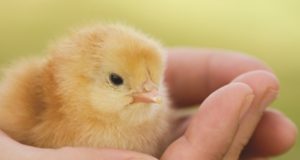If you have no personal experience with Montessori schooling, you have perhaps at least heard of this educational method or have seen the Montessori kindergarten buildings. New techniques in education tend to come and go, staying in fashion for a few decades before being replaced by something new and better. The Montessori Method, however, has stood the test of time and is now used in thousands of schools around the world. You may not be a professional educator trained in this method, but that does not mean that you cannot use the ideas and techniques of Montessori to teach your children at home.
Who and what is this Montessori?
 Maria Montessori was an educator who studied and worked in Rome in the late 1800s and early 1900s. She was a doctor and a scientist before she had anything to do with education, but she used her scientific methods and thinking to come up with innovative ways to teach children. As a physician, Montessori specialized in pediatrics and psychiatry, and it was through her observations of children that she began to think about how kids learn and develop intellectually. As a scientist, she recognized the need to use critical thinking to determine if methods of teaching were actually working and to be open to change when they were not.
Maria Montessori was an educator who studied and worked in Rome in the late 1800s and early 1900s. She was a doctor and a scientist before she had anything to do with education, but she used her scientific methods and thinking to come up with innovative ways to teach children. As a physician, Montessori specialized in pediatrics and psychiatry, and it was through her observations of children that she began to think about how kids learn and develop intellectually. As a scientist, she recognized the need to use critical thinking to determine if methods of teaching were actually working and to be open to change when they were not.
Montessori opened her first school in Rome in 1907, and her methods spread to the U.S. by 1911. Unfortunately, several leaders in American education were not open to her ideas and criticized her techniques. For about fifty years, Montessori education dwindled in the U.S., but it made a strong comeback in the 1960s. By then, educators were beginning to realize that her ideas were well ahead of the times in which she lived. Many parents and teachers today embrace the methods that Montessori developed and use them to great success.
Although she emphasized the evolution and adaptation of her ideas to meet the needs of students, situations, and times, several factors characterize a Montessori education in any setting:
- Independence. Children are encouraged to learn and develop independently. This means that they have the freedom to learn about what intrigues them the most. This is, of course, done within limits. The teacher sets the limits, but within those, gives the child the freedom of choice and pace.
- Mixed-age classrooms. Montessori classrooms are composed of children of different ages, most commonly those from about two-and-a-half to six.
- Blocks of time. Children are allowed blocks of time in which to work or learn uninterrupted by other activities.
- Knowledge is constructed rather than instructed. Instead of traditional instruction from a teacher to a student, Montessori students construct their own knowledge through exploration and discovery.
Can you homeschool with the Montessori Method?
Those trained to educate via the Montessori Method might tell you no. They might say that only trained professionals using resources developed for a Montessori classroom can teach with this method. That may be technically true, but it doesn’t mean that you can’t learn more about it and use aspects that you think would benefit your children. Because you are homeschooling, you have the freedom to try any educational approach you like. If it doesn’t work for you or your children, you can stop and try something else.
New DVD reveals the truths about public schools…
How do you get started?
The best way to get into a new educational idea is to educate yourself. Get books from the library about Montessori and learn all you can about it before you attempt to implement it. Just remember that you don’t have to turn your home into a die-hard Montessori academy. Pick the parts that you like and think will benefit your kids. If you like other ideas as well, mix those in. Find the perfect fit for your educational goals.
As you read up on Montessori, you will begin to learn that teaching with this method involves using a lot of stuff. Your kids are supposed to be able to grab and use materials that are appropriate for their individual abilities and developmental stage. These items can be toys, manipulatives, and books, and they should be easily accessible to them at all times. You can probably use many of the items you have in your home already, but you may need to purchase some new materials.
What is the set up for a Montessori education?
A Montessori classroom consists of three things: the teacher, the children, and materials. The environment and materials in the environment were very important according to Montessori. She believed that the classroom should be proportionate to the children, meaning that everything should be reachable and usable by little hands. She also believed that it should be well ordered and clean with an arrangement of materials that leads to children moving and trying out new materials easily. Finally, the materials should be limited to those that are appropriate to the age and development of the children in the classroom.
As for the materials that you will need to stock your classroom or teaching area, a variety of educational-type toys and books are best. You should have a variety of items that cover all aspects of a child’s learning. Depending on the age group, these should include life skills toys like kitchen and household items, books and other language tools, science toys, counting and math manipulatives, items for learning about colors, shapes, patterns, and letters, and any other kind of toy that encourages exploration, critical thinking, and discovery. If you are considering using a purely Montessori Method of instruction, it is very important that you get the right mix of materials. Consult with an expert source to make sure you get everything you need.
As you research the materials you will need for your classroom and it begins to look very pricey, consider joining up with other homeschoolers. Contact homeschooling groups in your community to find out if anyone else is trying out the Montessori Method. If so, you can share materials or even arrange to meet together and use them at the same time.
What kind of teacher should you be?
A Montessori teacher is more hands-off than a traditional teacher, but that does not mean that he or she is not always working. When teaching with the Montessori Method, you should be respectful and gentle. Refrain from judging your child’s choices during learning time. The whole idea is that he is guiding his own development and working at his natural pace. You should assist him when he needs help, but only when he asks for it. You should be observing him as he learns to see what he knows, what he does not know yet, and what he is working on learning.
Can Montessori work with older children?
Most commercial Montessori schools are tailored towards kids between the ages of two-and-a-half and six. They all learn together in a classroom of about twenty or thirty. Some schools also have groups of even younger children, sometimes with parents as well. Groupings of children from ages six to nine and nine to twelve are also not uncommon. Children at these ages receive a little bit of direct instruction and demonstration of activities from the teacher, but they are also free to choose what and how they learn. Again, it is very important that they are given appropriate materials from which to choose.
Montessori never fully developed a program for children older than twelve years of age, but it is possible to continue with at least some aspects of independence and choice when teaching at the middle and high-school levels. Montessori recommended that teenagers learn better in the countryside where it is quiet and they can be surrounded by nature. That just might be perfect for the homeschooler!
©2012 Off the Grid News
 Off The Grid News Better Ideas For Off The Grid Living
Off The Grid News Better Ideas For Off The Grid Living




